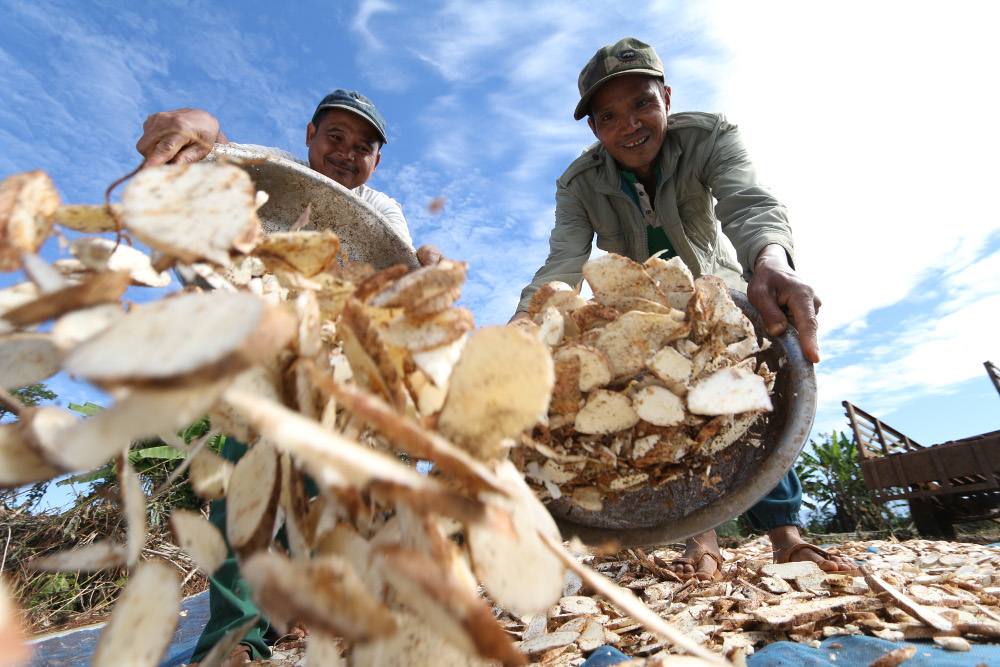
Investing in Climate-Smart Agriculture Value Chains in the Greater Mekong Subregion
Agribusiness is a catalyst for development and investments along the Greater Mekong Subregion (GMS) economic corridors.
Three countries in the subregion, Cambodia, Lao People’s Democratic Republic, and Myanmar, will improve agribusiness value chain infrastructure in a climate-friendly manner. Agriculture is a key contributor to the growth of these economies and provides livelihood to large populations. However, climate change poses a major threat to improving their agricultural competitiveness.
“The project covers the whole value chain—from production to marketing to export,” says Srinivasan Ancha, principal climate change specialist at the Asian Development Bank (ADB). “It will use climate-friendly practices to reduce vulnerability to climate change, while reducing the carbon footprint of the value chain, wherever feasible.”
Agribusiness along economic corridors
The focus of the ADB-supported Climate-Friendly Agribusiness Value Chains Sector Project is to help transform GMS transport corridors into economic corridors by developing upstream and downstream linkages in agribusiness supply chains, says Ancha.
Investments under the GMS Program have been largely used to establish an integrated system of roads, rails, and ports to connect the six Mekong countries, which also include the People’s Republic of China (specifically Yunnan Province and Guangxi Zhuang Autonomous Region), Thailand, and Viet Nam. This transport infrastructure is an important component of building economic corridors to boost regional and international trade and investments, and to promote inclusive and sustainable economic growth in the subregion.
In Cambodia, Ancha says the project will improve the competitiveness of the value chains of rice, maize, cassava and mango along the Southern Economic Corridor and South Coastal Corridor. In the Lao PDR, target crops are rice and vegetables, including organic vegetables along the East-West Economic Corridor and a portion of the North-South Economic Corridor. In Myanmar, target crops are rice, beans, pulses (such as chickpeas), and oil seeds (such as groundnut and sesame) along the Northern Economic Corridor linking the People’s Republic of China and India.
A priority project
The project is included in the Regional Investment Framework 2022, the medium-term pipeline of priority projects in the GMS. It is also the first project to be implemented under the agricultural value chain strategy adopted by the six GMS countries for 2018–2022.
The new strategy provides a subregional approach toward safe and environment-friendly agrifood value chains. Its 5-year plan is expected to achieve greater trade, economies of scale, and inclusive food safety in the subregion. These will be achieved by harmonizing food quality and safety standards, practices, and policies; strengthening value chains infrastructure; sharing related knowledge and innovations; and marketing and promoting the subregion as a supplier of safe and environment-friendly agriculture products.
The agribusiness value chains project will invest about $250 million in key infrastructure, which include:
- irrigation and water management systems, such as rainwater harvesting ponds and solar-powered drip and sprinkler irrigation systems;
- all-weather roads that provide access to markets;
- renewable bioenergy systems that can meet the growing energy needs of rural communities and agribusinesses; and
- efficient storage, processing-and-aggregation, grading, and marketing infrastructure to ensure the delivery of safe, quality food products.
The Green Climate Fund is cofinancing the project in Cambodia, while the Global Agriculture and Food Security Program is providing cofinancing in Myanmar.
Higher productivity and quality
“The project’s main goal is to increase productivity and resource efficiency along the whole value chain,” says Ancha. “It will develop seed value chains, promote agriculture intensification, improve the quality and safety of agricultural products, and enhance post-harvest facilities and opportunities for value addition.”
Plans include improving the efficiency and climate resilience of irrigation schemes. “In Cambodia, for example, solar-powered drip irrigation system for mangoes, ridge and furrow irrigation for maize, and alternate wetting and drying system for rice paddies will be promoted to conserve water.”
Ancha notes that importing countries have become more conscious of food safety issues, such as high pesticide residue in agricultural products. He says the project will help improve food safety and quality by increasing the capacity of public sector testing laboratories. The project will also distribute food safety and quality testing kits for the private sector to help identify food safety issues.
Aside from modernizing post-harvest facilities (i.e., milling, drying, storage, and processing), the project will explore all value addition opportunities. For example, instead of just fresh cassava, the project will help farmers to produce cassava chips. “We will look at increasing quality, safety, and export potential,” Ancha says.
High-level technology applications
The project will use advanced technologies to modernize the agriculture sector and strengthen climate resilience. It will promote the use of biofertilizers and organic farming and disseminate crop varieties that are flood- and drought-tolerant. Using information and communication technology (ICT) tools, the project will provide weather, market, and agronomic information to create a more effective environment for climate risk management and reduce the agriculture sector’s carbon footprint.
The project will also demonstrate laser land levelling in about 4,000 hectares in Cambodia to improve the efficiency of water use. “This is important to dry zones where there is scarce groundwater,” Ancha explains. “It also reduces emission of greenhouse gases such as methane generated by farming.”
A catalyst for achieving sustainable goals
The project is in line with efforts of Cambodia, Lao PDR, and Myanmar to achieve food security and promote sustainable agriculture. The project directly contributes to Sustainable Development Goals 2 (zero hunger), 5 (gender equality), 8 (decent work and economic growth), 9 (industry, innovation and infrastructure), and 13 (climate action), and is aligned with Nationally Determined Contributions to the United Nations Framework Convention on Climate Change. The project directly supports three of seven operational priorities of ADB Strategy 2030, including promoting rural development and food security; tackling climate change, building climate and disaster resilience, and enhancing environmental sustainability; and fostering regional cooperation and integration.
